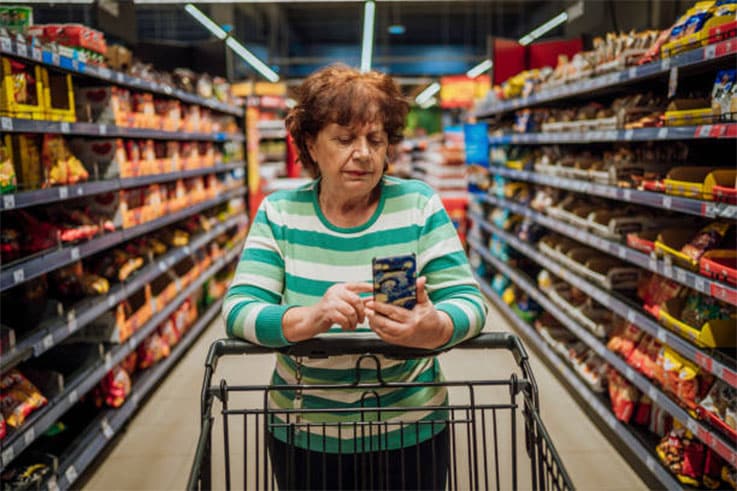Public concern over cost-of-living is mounting despite state assurances that the ending of relief measures was warranted and necessary.
Recently released data appeared to validate consumers’ fears, that the abolition of the energy subsidies for the vast majority of households and the 8.3 cents per litre increase in petrol, would bring a renewed wave of price hikes on items whose production and distribution is tied to electricity and fuel costs.
According to the head of the consumer association, Marios Droushiotis, prices of some food items have actually slightly dropped over the past year.
“However, this does not mean people can afford the current prices which have risen to extremely high levels. A big proportion of the public is struggling to make ends meet,” Droushiotis told Alphanews.
Although the rate of inflation is continuing to decline, the cost of food items has remained high, according to the consumer index report.
Figures on annual prices announced by the state statistical service confirm the problem of food and other supermarket items not falling in accordance with inflation and, on the contrary, becoming embedded.
Inflation in June 2023 fell to its lowest level since April 2021, at 1.9 per cent, down from 3 per cent in May, and 9.6 per cent in June 2022.
But while headline inflation has eased significantly, the food index in June 2023 rose to 9.9, up from 7.8 per cent in June 2022 year-on-year, that is, compared to June 2021– a period when fuel was more expensive, and the energy crisis hit supermarket shelves.
This means that the cost of food, on average, has risen by almost 19 per cent since June 2021. Individual food items, however, have increased by much more over the past 24 months.
According to the consumer price index the cost of sugar, in particular, has skyrocketed, with an over 70 per cent increase observed in June 2023, compared with June 2021.
Other items that cost substantially more than two years ago (over 20 per cent), are preserved milk, rice and pasta, meat (particularly lamb), potatoes, olive oil and vegetable fats.
The prices of dairy products on average have risen by 12 per cent, compared to the previous annual jump of 3.8 per cent. The cost of yoghurt, specifically, rose by 11.3 per cent in June compared to 3.2 per cent last year.
Fresh (whole) milk rose by 6.2 per cent, over a 5.7 per cent increase in June 2022, and a 0.3 per cent decrease in 2021.
Fresh low-fat milk increased by 6.8 per cent on an annual basis compared to 3.9 per cent in 2022, while in 2021 there was no change.
Preserved milk was 25.9 per cent more expensive in June, compared to a 7.2 per cent rise year-on-year in 2022 and 1 per cent drop in 2021.
Cheese rose by 11.3 per cent compared to 3.2 per cent in June 2022.
Bread and cereals have risen by 10.7 per cent and baked goods by 11.6 per cent (where last year’s annual increase was 9.6 per cent). According to the statistical services, bread prices, nonetheless, dropped in price by 1.8 per cent in June.
Milk, as well as bread, fall under the zero VAT rate, which was supposed to act as a mitigating measure for households under strain, as from May.
Rice rose another 11.5 per cent, after a 17 per cent increase last year in June, while the price of pasta rose 4.9 per cent compared to 15.5 per cent last year.
Large increases have also been noted in meat prices. Beef and veal rose by 18.1 per cent in June on a year-over-year basis, compared with 9.7 per cent in 2022 and 0.1 per cent in 2021.
The price for lamb and mutton rose 26.5 per cent in June year-on-year, compared to 5.6 per cent in 2022 and 5.2 per cent in 2021. In other words, in the past two years the cost of lamb has increased by more than 33 per cent.
The rise in the price of pork rose by 8.1 per cent in June compared to a 14.6 per cent increase last year and a 0.4 per cent drop in 2021.
Poultry prices had the smallest increase this year, up by 2.1 per cent compared to 20 per cent in 2022 and a drop of 6.4 per cent in 2021.
Egg prices rose another 3.8 per cent over the 20.3 per cent increase last year.
Fruit prices rose 11.9 per cent after a 0.5 per cent drop last year, while vegetables rose by 14.4 per cent, over the 4.1 per cent increase last year, and the 2.7 per cent price decrease in 2021.
The price of potatoes fell by 8.3 per cent in June, however, this is compared to a whopping 99.4 per cent price increase in June 2021.
Olive oil increased by 17 per cent, compared to an increase of 3 per cent last year, while margarine and other vegetable fats rose 21.2 per cent over the 19.2 per cent increase in June 2022.







Click here to change your cookie preferences